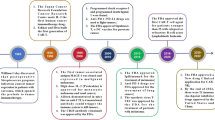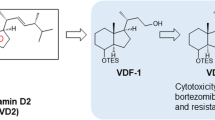Abstract
Brain metastasis is the main cause of treatment failure and melanoma-related death. Inadequate concentrations of therapeutic drugs in the brain due to the blood-brain barrier (BBB) pose a major challenge in the treatment of brain metastasis. Antipsychotics can cross the BBB to reach the brain. Fluphenazine (FPZ) inhibits the survival of melanoma cells in vitro. However, its efficacy in suppressing the metastasis of melanoma, especially brain metastasis, remains unknown. Therefore, we explored whether fluphenazine (FPZ) can be repurposed for treating melanoma metastasis. A subcutaneous tumor model, and experimental metastasis models that simulate the outgrowth of melanoma cells in the brain, lung, and bone were established to verify the inhibitory effect of FPZ on melanoma cells. FPZ showed potential inhibitory effects against melanoma both in vivo and in vitro. It induced G0/G1 phase arrest and-mitochondrion-mediated intrinsic apoptosis, and inhibited autophagic flux in melanoma cells in vitro. In vivo, subcutaneous tumor, brain, lung, and bone models of metastatic melanoma were established. Intraperitoneal injection of FPZ (8 mg/kg) significantly inhibited melanoma growth in the subcutaneous and experimental metastasis models. In a lung metastasis model, FPZ reduced the proportion of M2 macrophages and increased the proportion of CD8+ T cells and NK cells in vivo, thereby promoting an anticancer immune response. The findings of this study indicate that FPZ is a potential drug candidate for treating metastatic melanoma.






Similar content being viewed by others
Data availability
All the original data used in our study can available upon request for noncommercial purposes.
Abbreviations
- BMs:
-
brain metastases
- MAP:
-
mitogen-activated protein
- BBB:
-
blood-brain barrier
- IC50:
-
half maximal inhibitory concentration
- FCM:
-
flow cytometry;
- ΔΨm:
-
mitochondrial membrane potential
- ROS:
-
reactive oxygen species;
- H&E:
-
hematoxylin and eosin
- CDK:
-
cyclin-dependent kinase;
- p21:
-
cyclin-dependent kinase inhibitor 1 A
- p27:
-
cyclin-dependent kinase inhibitor 1B
- PRAP:
-
poly ADP-ribose polymerase
- Bcl2:
-
B-cell lymphoma 2;p62/SQSTM1,sequestosome 1
- CQ:
-
chloroquine diphosphate
References
Leonardi GC et al (2018) Cutaneous melanoma: from pathogenesis to therapy (review). Int J Oncol 52(4):1071–1080. https://doi.org/10.3892/ijo.2018.4287
Braeuer RR et al (2014) Why is melanoma so metastatic? Pigment Cell Melanoma Res 27(1):19–36. https://doi.org/10.1111/pcmr.12172
Marchetti D et al (2003) Brain-metastatic melanoma: a neurotrophic perspective. Pathol Oncol Res 9(3):147–158. https://doi.org/10.1007/bf03033729
Gutzmer R et al (2020) Melanoma brain metastases - interdisciplinary management recommendations 2020. Cancer Treat Rev 89:102083. https://doi.org/10.1016/j.ctrv.2020.102083
Soliman M et al (2019) The clinical significance of indeterminate pulmonary nodules in melanoma patients at baseline and during follow-up chest CT. Eur J Radiol Open 6:85–90. https://doi.org/10.1016/j.ejro.2019.02.003
Younes R, Abrao FC, Gross J (2013) Pulmonary metastasectomy for malignant melanoma: prognostic factors for long-term survival. Melanoma Res 23(4):307–311. https://doi.org/10.1097/CMR.0b013e3283632cbe
Zekri J et al (2017) Complications of bone metastases from malignant melanoma. J Bone Oncol 8:13–17. https://doi.org/10.1016/j.jbo.2017.08.003
Fornetti J, Welm AL, Stewart SA (2018) Understanding the bone in Cancer Metastasis. J Bone Miner Res 33(12):2099–2113. https://doi.org/10.1002/jbmr.3618
Glitza Oliva I, Tawbi H, Davies MA (2017) Melanoma Brain Metastases: current areas of investigation and future directions. Cancer J 23(1):68–74. https://doi.org/10.1097/ppo.0000000000000237
Pushpakom S et al (2019) Drug repurposing: progress, challenges and recommendations. Nat Rev Drug Discov 18(1):41–58. https://doi.org/10.1038/nrd.2018.168
Xia Y et al (2021) Repurposing of antipsychotic trifluoperazine for treating brain metastasis, lung metastasis and bone metastasis of melanoma by disrupting autophagy flux Pharmacol Res. 163:105295. https://doi.org/10.1016/j.phrs.2020.105295
Ranjan A, Gupta P, Srivastava SK (2016) Penfluridol: an antipsychotic Agent suppresses metastatic Tumor Growth in Triple-Negative breast Cancer by inhibiting Integrin Signaling Axis Cancer Res. 76:877–890. https://doi.org/10.1158/0008-5472.Can-15-1233. 4
Liu S et al (2018) Osteocyte-driven downregulation of snail restrains Effects of Drd2 inhibitors on mammary tumor cells. Cancer Res 78(14):3865–3876. https://doi.org/10.1158/0008-5472.Can-18-0056
Xu F et al (2019) Repositioning antipsychotic fluphenazine hydrochloride for treating triple negative breast cancer with brain metastases and lung metastases. Am J Cancer Res 9(3):459–478
Karki P et al (2021) A transient metabolic state in Melanoma Persister cells mediated by Chemotherapeutic Treatments Front Mol Biosci. 8:780192. https://doi.org/10.3389/fmolb.2021.780192
Lu WJ et al (2018) #2714, a novel active inhibitor with potent G2/M phase arrest and antitumor efficacy in preclinical models cell death Discov. 4:24. https://doi.org/10.1038/s41420-018-0032-y
Liu N et al (2020) Hyperuricemia induces lipid disturbances mediated by LPCAT3 upregulation in the liver Faseb j. 34:13474–13493. https://doi.org/10.1096/fj.202000950R. 10
Glazer WM (1988) Fluphenazine decanoate. Its steady-state pharmacologic profile and relationship to tardive dyskinesia Schizophr Res. 1:425–429. https://doi.org/10.1016/0920-9964(88)90025-4. 6
Dujon AM et al (2021) Is there one key step in the Metastatic Cascade? Cancers (Basel). 1315. https://doi.org/10.3390/cancers13153693
Lei X et al (2020) Immune cells within the tumor microenvironment: Biological functions and roles in cancer immunotherapy Cancer Lett. 470:126–133. https://doi.org/10.1016/j.canlet.2019.11.009
Aras S, Zaidi MR (2017) TAMeless traitors: macrophages in cancer progression and metastasis. Br J Cancer 117(11):1583–1591. https://doi.org/10.1038/bjc.2017.356
Terrén I et al (2019) NK Cell Metabolism and Tumor Microenvironment Front Immunol. 10:2278. https://doi.org/10.3389/fimmu.2019.02278
Kishton RJ, Sukumar M, Restifo NP (2017) Metabolic regulation of T cell longevity and function. Tumor Immunotherapy Cell Metab 26(1):94–109. https://doi.org/10.1016/j.cmet.2017.06.016
Liu Q, Sun Z, Chen L (2020) Memory T cells: strategies for optimizing tumor immunotherapy protein cell. 11:549–564. https://doi.org/10.1007/s13238-020-00707-9. 8
Malumbres M, Barbacid M (2009) Cell cycle, CDKs and cancer: a changing paradigm. Nat Rev Cancer 9(3):153–166. https://doi.org/10.1038/nrc2602
Elmore S (2007) Apoptosis: a review of programmed cell death Toxicol Pathol. 35:495–516. https://doi.org/10.1080/01926230701320337. 4
Saelens X et al (2004) Toxic proteins released from mitochondria in cell death Oncogene. 23:2861–2874. https://doi.org/10.1038/sj.onc.1207523. 16
Li Y et al (2016) A cell-based quantitative high-throughput image screening identified novel autophagy modulators. Pharmacol Res 110:35–49. https://doi.org/10.1016/j.phrs.2016.05.004
Bedrosian I et al (2000) Incidence of sentinel node metastasis in patients with thin primary melanoma (< or = 1 mm) with vertical growth phase. Ann Surg Oncol 7(4):262–267. https://doi.org/10.1007/s10434-000-0262-z
Damsky WE, Theodosakis N, Bosenberg M (2014) Melanoma metastasis: new concepts and evolving paradigms Oncogene. 33:2413–2422. https://doi.org/10.1038/onc.2013.194. 19
Agarwala SS et al (2004) Temozolomide for the treatment of brain metastases associated with metastatic melanoma: a phase II study. J Clin Oncol 22(11):2101–2107. https://doi.org/10.1200/jco.2004.11.044
Cha Y et al (2018) Drug repurposing from the perspective of pharmaceutical companies. Br J Pharmacol 175(2):168–180. https://doi.org/10.1111/bph.13798
Vasan N, Baselga J, Hyman DM (2019) A view on drug resistance in cancer nature. 575:299–309. https://doi.org/10.1038/s41586-019-1730-1. 7782
Malumbres M, Barbacid M (2006) Is cyclin D1-CDK4 kinase a bona fide cancer target? Cancer Cell 9(1):2–4. https://doi.org/10.1016/j.ccr.2005.12.026
Barnum KJ, O’Connell MJ (2014) Cell cycle regulation by checkpoints methods Mol Biol. 1170:29–40. https://doi.org/10.1007/978-1-4939-0888-2_2
Hanahan D, Weinberg RA (2000) The hallmarks of cancer cell. 100:57–70. https://doi.org/10.1016/s0092-8674(00)81683-9. 1
Hassan M et al (2014) Apoptosis and molecular targeting therapy in cancer Biomed Res Int. 2014: p. 150845.https://doi.org/10.1155/2014/150845
Giam M, Huang DC, Bouillet P (2008) BH3-only proteins and their roles in programmed cell death Oncogene. 27 suppl 1: p. S128. https://doi.org/10.1038/onc.2009.50
Majidpoor J, Mortezaee K (2021) Steps in metastasis: an. updated Rev Med Oncol 38(1). p. 3https://doi.org/10.1007/s12032-020-01447-w
Mina LA, Sledge GW Jr (2011) Rethinking the metastatic cascade as a therapeutic target. Nat Rev Clin Oncol 8(6):325–332. https://doi.org/10.1038/nrclinonc.2011.59
Massagué J, Obenauf AC (2016) Metastatic colonization by circulating tumour cells Nature. 529:298–306. https://doi.org/10.1038/nature17038. 7586
Lowery FJ, Yu D (2017) Brain metastasis: unique challenges and open opportunities Biochim Biophys. Acta Rev Cancer 1867(1):49–57. https://doi.org/10.1016/j.bbcan.2016.12.001
Bader JE, Voss K, Rathmell JC (2020) Targeting metabolism to improve the Tumor Microenvironment for Cancer. Immunotherapy Mol Cell 78(6):1019–1033. https://doi.org/10.1016/j.molcel.2020.05.034
Han Y, Liu D, Li L (2020) PD-1/PD-L1 pathway: current researches in cancer. Am J Cancer Res 10(3):727–742
Ikeda H, Old LJ, Schreiber RD (2002) The roles of IFN gamma in protection against tumor development and cancer immunoediting. Cytokine Growth Factor Rev 13(2):95–109. https://doi.org/10.1016/s1359-6101(01)00038-7
Amaravadi R, Kimmelman AC, White E (2016) Recent insights into the function of autophagy. in cancer Genes Dev 30(17):1913–1930. https://doi.org/10.1101/gad.287524.116
Levy JMM, Towers CG, Thorburn A (2017) Targeting autophagy in cancer. Nat Rev Cancer 17(9):528–542. https://doi.org/10.1038/nrc.2017.53
White E, Mehnert JM, Chan CS (2015) Autophagy, metabolism, and Cancer Clin Cancer Res. 21:5037–5046. https://doi.org/10.1158/1078-0432.Ccr-15-0490. 22
Jiang P, Mizushima N (2015) LC3- and p62-based biochemical methods for the analysis of autophagy progression in mammalian cells methods. 75:13–18. https://doi.org/10.1016/j.ymeth.2014.11.021
Acknowledgements
Thanks to Liyuan Fang (Core Facilities of West China Hospital) for her contribution in the identification of some human melanoma cells lines.
Funding
This work was funded by the National Natural Science Foundation of China (grant No. 82173280), the Department of Science and Technology of Sichuan Province (grant number: 2021YJ0450), the Chengdu Science and Technology Bureau International Cooperation Project (grant number: 2019-GH02-00036-HZ) and Central Government Funds of Guiding Local Scientific and Technological Development for Sichuan Province (grant number: 2021ZYD0070).
Author information
Authors and Affiliations
Contributions
YX, HZX: Research ideas and experimental design. All authors: Acquisition and interpretation of the data. WML, SRL: Statistical analysis. HZX, QRH: Drafting of the manuscript, HBM: Manuscript revision. YX: Obtained funding. YX, YWZ: Study supervision.
Corresponding authors
Ethics declarations
Conflict of interest
The authors have no conflicts of interest to declare.
Ethics statement
The research protocol was approved by the Animal Care and Use Committee of Sichuan University, the written informed consents of all participants was obtained.
Additional information
Publisher’s Note
Springer Nature remains neutral with regard to jurisdictional claims in published maps and institutional affiliations.
Electronic supplementary material
Below is the link to the electronic supplementary material.
Rights and permissions
Springer Nature or its licensor (e.g. a society or other partner) holds exclusive rights to this article under a publishing agreement with the author(s) or other rightsholder(s); author self-archiving of the accepted manuscript version of this article is solely governed by the terms of such publishing agreement and applicable law.
About this article
Cite this article
Xi, H., Wu, M., Ma, H. et al. Repurposing fluphenazine to suppress melanoma brain, lung and bone metastasis by inducing G0/G1 cell cycle arrest and apoptosis and disrupting autophagic flux. Clin Exp Metastasis 40, 161–175 (2023). https://doi.org/10.1007/s10585-023-10202-0
Received:
Accepted:
Published:
Issue Date:
DOI: https://doi.org/10.1007/s10585-023-10202-0




